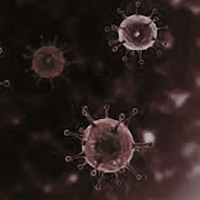Common anti-oxidant vitamin C as an anti-infective agent with remedial role on SARS-CoV-2 infection. An update

Submitted: February 16, 2021
Accepted: May 26, 2021
Published: July 19, 2021
Accepted: May 26, 2021
Abstract Views: 1756
PDF: 629
Publisher's note
All claims expressed in this article are solely those of the authors and do not necessarily represent those of their affiliated organizations, or those of the publisher, the editors and the reviewers. Any product that may be evaluated in this article or claim that may be made by its manufacturer is not guaranteed or endorsed by the publisher.
All claims expressed in this article are solely those of the authors and do not necessarily represent those of their affiliated organizations, or those of the publisher, the editors and the reviewers. Any product that may be evaluated in this article or claim that may be made by its manufacturer is not guaranteed or endorsed by the publisher.
Similar Articles
- Lilit Gevorgyan, Ruzanna Grigoryan, Kostyantyn Dumchev, Kristina Akopyan, Anush Khachatryan, Eduard Kabasakalyan, Trdat Grigoryan, Marina Safaryan, Vardan Avagyan, Sayohat Hasanova, Alberto Matteelli, Factors associated with unfavourable treatment outcomes in people with HIV-associated tuberculosis in Armenia, 2015 to 2019 , Monaldi Archives for Chest Disease: Vol. 91 No. 1 (2021)
- S. La Grutta, G. Nicolini, C. Capristo, S.C. Bellodi, G.A. Rossi, Once daily nebulized beclomethasone is effective in maintaining pulmonary function and improving symptoms in asthmatic children , Monaldi Archives for Chest Disease: Vol. 67 No. 1 (2007): Pulmonary series
- Lilit Khachatryan, Ruzanna Grigoryan, Andrei Dadu, Ajay M.V. Kumar, Kristina Akopyan, Kostyantyn Dumchev, Hasmik Harutyunyan, Alberto Matteelli, Factors associated with unfavourable treatment outcomes among people with rifampicin-resistant tuberculosis in Armenia, 2014-2017 , Monaldi Archives for Chest Disease: Vol. 91 No. 1 (2021)
- Roberto Porta, Laura Comini, Luca Barbano, Luca Bianchi, Michele Vitacca, A case of obstructive sleep apnea syndrome associated with floppy eyelid syndrome: positive effect of CPAP therapy , Monaldi Archives for Chest Disease: Vol. 87 No. 1 (2017)
- Natalia Adamashvili, Kristina Akopyan, Nestani Tukvadze, Kostyantyn Dumchev, Yuliia Sereda, Irma Khonelidze, Giorgi Kuchukhidze, Factors associated with loss to follow-up among people with tuberculosis in the country of Georgia: a cohort study , Monaldi Archives for Chest Disease: Vol. 91 No. 1 (2021)
- Anastasiia Russkikh, Oleksandr Korotych, Yuliia Sereda, Anastasia Samoilova, Jay Achar, Askar Yedilbayev, Masoud Dara, Irina Vasilyeva, Factors associated with culture conversion among adults treated for pulmonary extensively drug-resistant tuberculosis during 2018-2019 in the Russian Federation: an observational cohort study , Monaldi Archives for Chest Disease: Vol. 91 No. 1 (2021)
- Marzia Vassalini, Andrea Verzeletti, Francesco De Ferrari, Standard of care and guidelines in prevention and diagnosis of venous thromboembolism: medico-legal implications , Monaldi Archives for Chest Disease: Vol. 84 No. 1-2 (2015): Cardiac series
- Abhishek B J, Agadi Hiremath Viswanatha Swamy, Sanatkumar Bharamu Nyamagoud, Anupama George, Namratha D, Respiratory syncytial virus: an overview of clinical manifestations and management in the Indian pediatric population , Monaldi Archives for Chest Disease: Early Access
- Christopher Ull, Mirko Aach, Josef Reichert, Thomas Armin Schildhauer, Justyna Swol, Successful non-surgical management of pleuroparenchymal fistula following cervical intraspinal empyema , Monaldi Archives for Chest Disease: Vol. 88 No. 1 (2018)
- A.E. Erbaycu, Z. Taymaz, F. Tuksavul, A. Afrashi, S.Z. Güçlü, What happens when oral tuberculosis is not treated? , Monaldi Archives for Chest Disease: Vol. 67 No. 2 (2007): Pulmonary series
<< < 1 2 3 4 5 6 7 8 9 10 > >>
You may also start an advanced similarity search for this article.

 https://doi.org/10.4081/monaldi.2021.1808
https://doi.org/10.4081/monaldi.2021.1808





